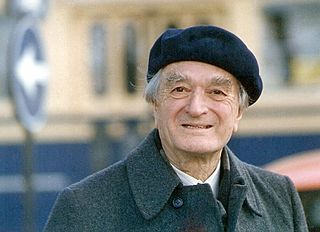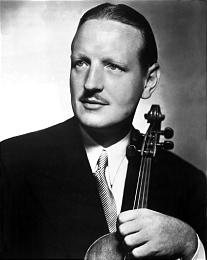Related Research Articles

Béla Viktor János Bartók was a Hungarian composer, pianist and ethnomusicologist. He is considered one of the most important composers of the 20th century; he and Franz Liszt are regarded as Hungary's greatest composers. Through his collection and analytical study of folk music, he was one of the founders of comparative musicology, which later became known as ethnomusicology.

The viola ( vee-OH-lə, Italian:[ˈvjɔːla,viˈɔːla]) is a string instrument that is usually bowed or plucked. Slightly larger than a violin, it has a lower and deeper sound. Since the 18th century, it has been the middle or alto voice of the violin family, between the violin (which is tuned a perfect fifth higher) and the cello (which is tuned an octave lower). The strings from low to high are typically tuned to C3, G3, D4, and A4.

Pizzicato is a playing technique that involves plucking the strings of a string instrument. The exact technique varies somewhat depending on the type of instrument:

Chamber music is a form of classical music that is composed for a small group of instruments—traditionally a group that could fit in a palace chamber or a large room. Most broadly, it includes any art music that is performed by a small number of performers, with one performer to a part. However, by convention, it usually does not include solo instrument performances.

A string orchestra is an orchestra consisting solely of a string section made up of the bowed strings used in Western Classical music. The instruments of such an orchestra are most often the following: the violin, which is divided into first and second violin players, the viola, the cello, and usually, but not always, the double bass.

The Concerto for Orchestra, Sz. 116, BB 123, is a five-movement orchestral work composed by Béla Bartók in 1943. It is one of his best-known, most popular, and most accessible works.
The String Quartet No. 1 in A minor by Hungarian composer Béla Bartók was completed in 1909. The score is dated January 27 of that year. It is one of six string quartets by Bartok.

String Quartet No. 3 by Béla Bartók was written in September 1927 in Budapest. It is one of six string quartets by Bartók.

The String Quartet No. 5, Sz. 102, BB 110 by Béla Bartók was written between 6 August and 6 September 1934. It is one of six string quartets by Bartok.

The String Quartet No. 6 in D minor, Sz. 114, BB 119, was the final string quartet that Béla Bartók wrote before his death in 1945.

The String Quartet No. 4 in C major by Béla Bartók was written from July to September 1928 in Budapest. It is one of six string quartets by Bartok.

Ahmet Adnan Saygun was a Turkish composer, musicologist and writer on music.
The Piano Concerto No. 3 in E major, Sz. 119, BB 127 of Béla Bartók is a musical composition for piano and orchestra. The work was composed in 1945 during the final months of his life, as a surprise birthday present for his second wife Ditta Pásztory-Bartók.

The Viola Concerto, Sz. 120, BB 128 was one of the last pieces Béla Bartók wrote. He began composing it while living in Saranac Lake, New York, in July 1945. It was commissioned by William Primrose, a respected violist who knew that Bartók could provide a challenging piece for him to perform. He said that Bartók should not "feel in any way proscribed by the apparent technical limitations of the instrument". Bartók was suffering the terminal stages of leukemia when he began writing the piece and left only sketches at the time of his death.
Béla Bartók's Violin Concerto No. 1, Sz. 36, BB 48a was written in the years 1907–1908, but only published in 1956, 11 years after the composer's death, as "Violin Concerto No. 1, Op. posth." It was premiered on 30 May 1958 in Basel, Switzerland.

The string section is composed of bowed instruments belonging to the violin family. It normally consists of first and second violins, violas, cellos, and double basses. It is the most numerous group in the standard orchestra. In discussions of the instrumentation of a musical work, the phrase "the strings" or "and strings" is used to indicate a string section as just defined. An orchestra consisting solely of a string section is called a string orchestra. Smaller string sections are sometimes used in jazz, pop, and rock music and in the pit orchestras of musical theatre.
Night music is a musical style of the Hungarian composer Béla Bartók which he used mostly in slow movements of multi-movement ensemble or orchestra compositions in his mature period. It is characterized by "eerie dissonances providing a backdrop to sounds of nature and lonely melodies".
Divertimento for String Orchestra Sz.113 BB.118 is a three-movement work composed by Béla Bartók in 1939, scored for full orchestral strings. Paul Sacher, a Swiss conductor, patron, impresario, and the founder of the chamber orchestra Basler Kammerorchester, commissioned Bartók to compose the Divertimento, which is now known to be the pair's last collaborative work.

The Hungarian composer György Ligeti published three string quartets: two string quartets proper and a student piece from 1950 published toward the end of his life. The first two quartets represent his early period, inspired by Béla Bartók, and middle period, which was largely micropolyphonic.
References
- 1 2 Wilson, Paul (1992). The Music of Béla Bartók. ISBN 0-300-05111-5. p. 32.